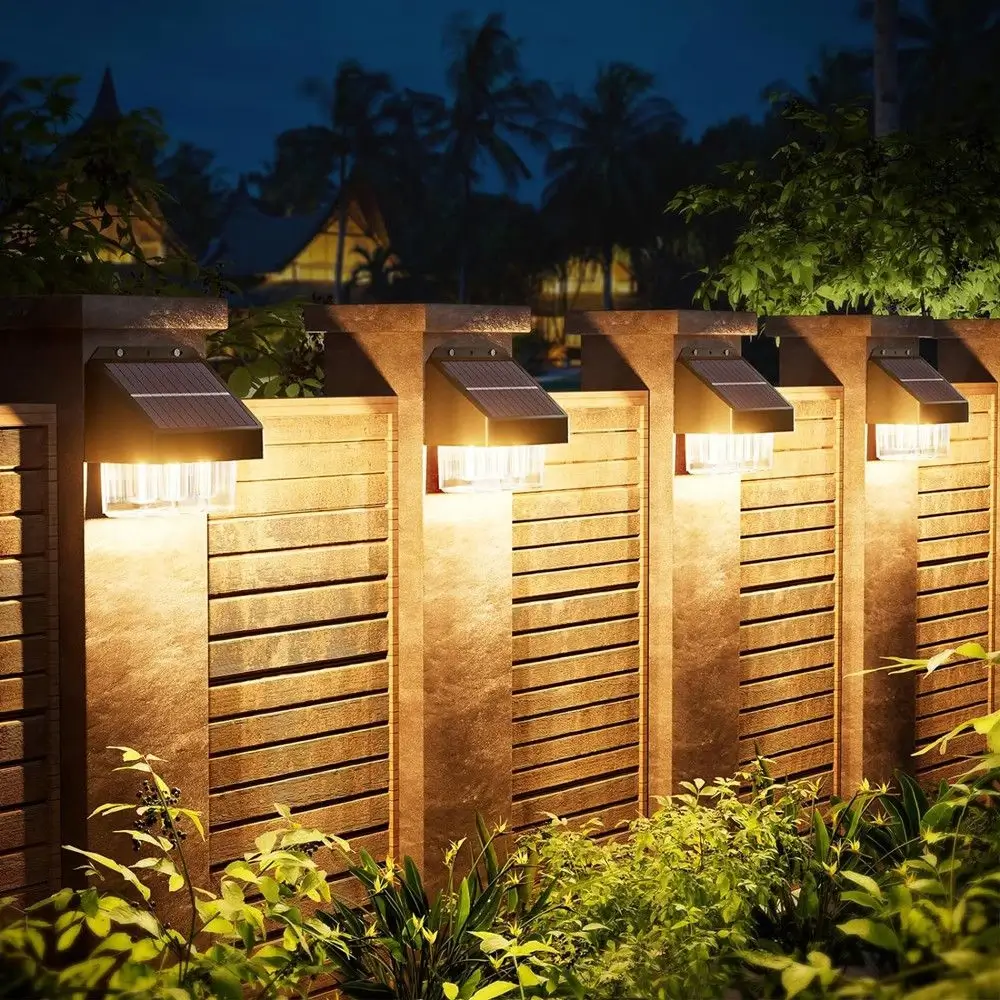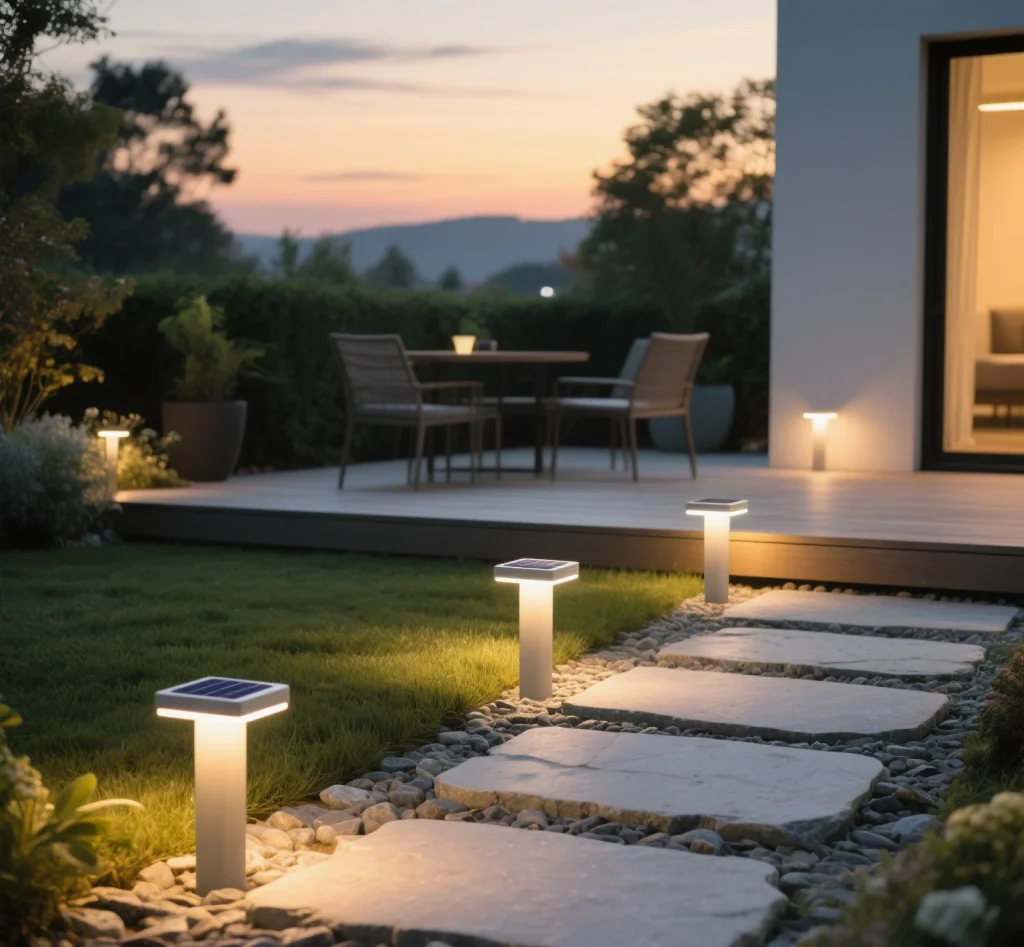Outdoor solar security lighting provides an eco-friendly, cost-effective way to enhance safety and visibility around homes and properties. These systems harness solar energy to power advanced lighting solutions, offering reliable illumination without the need for complex wiring or high electricity costs. This guide explores key features and considerations to help you choose and optimize outdoor solar security lighting for maximum performance, focusing on motion detection, coverage, weather resilience, deterrent effects, and discreet installation.

Motion Detection Optimization: Sensitivity and False Trigger Prevention
Effective outdoor solar security lighting relies on precise motion detection to activate lights only when needed, conserving energy and reducing unnecessary illumination. Advanced systems use passive infrared (PIR) sensors to detect heat signatures from humans or moving objects, ensuring responsiveness without excessive false triggers.
To optimize sensitivity, look for lights with adjustable detection ranges, typically between 10 and 30 feet. For example, a homeowner in a suburban neighborhood like those in Charlotte, North Carolina, might set a shorter range for a front porch to avoid activation by passing cars. In contrast, a larger property, such as one in rural Montana, could benefit from a wider range to cover expansive driveways. Many models allow fine-tuning sensitivity to ignore small animals like squirrels or birds, reducing false alarms.
False trigger prevention is critical. Advanced outdoor solar security lighting systems incorporate dual-sensor technology, combining PIR with microwave sensors to confirm motion before activating. This minimizes triggers from environmental factors like swaying branches or sudden temperature changes. Some units also feature customizable delay settings, ensuring lights stay on only as long as needed, typically 10 to 60 seconds, enhancing energy efficiency.
Strategic Coverage: Illuminating Doors, Windows, Fences, and Blind Spots
Comprehensive coverage is essential for outdoor solar security lighting to protect key areas like entry points, perimeter fences, and blind spots. Proper placement ensures no area is left vulnerable, creating a seamless security net around your property.
For doors and windows, position lights to cast illumination directly onto entryways. A typical setup might involve mounting a solar security light above a front door or garage, with a beam angle of 120 to 180 degrees to cover the entire entry zone. For instance, a homeowner in a coastal city like Miami might place lights to illuminate sliding glass doors, a common entry point for intruders.
Fences and perimeters require broader coverage. Wall-mounted or pole-mounted lights with adjustable heads can direct light along fence lines, deterring trespassers. In a neighborhood like those in Phoenix, where large backyards are common, consider lights with a 270-degree coverage angle to secure long stretches of fencing.
Blind spots, such as corners behind sheds or narrow side yards, are often overlooked. Compact, stake-mounted solar lights can be strategically placed in these areas. For example, a resident in a densely packed urban area like Chicago might use small, adjustable lights to cover tight alleyways. To ensure no dead zones, map your property and test light placement at night to confirm full illumination.
Weather Resilience: Sustained Performance in Overcast Conditions
Outdoor solar security lighting must perform reliably in challenging weather, especially during prolonged cloudy or rainy periods. Solar panels generate less energy in low-light conditions, so robust battery systems and efficient energy management are critical for uninterrupted operation.
High-quality solar security lights use lithium-ion or LiFePO4 batteries, which offer superior energy storage compared to older nickel-cadmium options. These batteries can store enough power to provide 8 to 12 hours of illumination after a single day of charging. For instance, in regions like Seattle, where overcast skies are frequent, a light with a 3,000mAh battery can sustain performance for 2 to 3 nights without direct sunlight.
Look for lights with high-efficiency monocrystalline solar panels, which convert sunlight at rates up to 22%, compared to 15-18% for polycrystalline panels. Some models include adaptive brightness technology, dimming lights during low activity to conserve power while maintaining security. For example, a homeowner in Portland, Oregon, might choose a system that switches to a low-glow mode after 30 seconds of inactivity, extending battery life during rainy weeks.

Regular maintenance, such as cleaning solar panels to remove dust or debris, ensures optimal charging. Many units are rated IP65 or higher for water and dust resistance, making them suitable for harsh conditions like those in coastal or desert regions.
Deterrent Lighting Effects: Brightness and Flash Modes for Security
The visual impact of outdoor solar security lighting plays a significant role in deterring potential intruders. High brightness and strategic lighting modes, such as flashing or pulsing, can create a psychological barrier, signaling an active security presence.
Brightness is measured in lumens, with effective security lights ranging from 800 to 2,000 lumens. For smaller areas like a backyard patio in a city like Denver, 800 lumens may suffice to illuminate a 20-foot radius. Larger spaces, such as a driveway in a sprawling suburb like those in Houston, may require 1,500 lumens or more for adequate coverage.
Flashing modes enhance deterrence by drawing attention to triggered lights. Some systems alternate between high and low brightness or use strobe effects to disorient intruders. For example, a light installed near a side gate might use a rapid flash mode when motion is detected, creating an immediate visual alert. Studies suggest that dynamic lighting patterns are more effective at deterring trespassers than steady illumination.
Programmable modes allow customization. A homeowner might set a steady high-brightness mode for evening hours and switch to a flashing mode late at night when activity is less expected. Many outdoor solar security lighting systems offer remote control or app-based settings, allowing adjustments without manual reconfiguration.
Discreet Installation: Anti-Tamper Design and Hidden Solar Panels
Discreet installation of outdoor solar security lighting enhances both aesthetics and security by minimizing visibility to potential vandals while ensuring efficient solar charging. Strategic placement and anti-tamper features protect the system from damage or theft.
Mount lights in hard-to-reach locations, such as high on walls or under eaves, to deter tampering. For example, a homeowner in a busy urban area like Atlanta might install lights 8 to 10 feet above ground to prevent interference. Anti-tamper screws or locked mounting brackets add an extra layer of protection, ensuring lights remain secure even in exposed locations.
Solar panel placement is equally important. Separate solar panels, connected by weatherproof cables, allow flexibility to position the panel in direct sunlight while keeping the light in a shaded or hidden area. For instance, in a wooded property in Asheville, North Carolina, the panel might be mounted on a sunny roof while the light illuminates a shaded pathway. Integrated panels should blend with surroundings—black or neutral-toned panels are less noticeable than reflective ones.
Camouflage techniques, such as painting mounts to match walls or hiding panels behind foliage, maintain aesthetics without sacrificing function. Motion-activated lights with low-profile designs blend into architectural features, ensuring security without drawing attention.
Conclusion: Building a Robust Outdoor Solar Security Lighting System
Outdoor solar security lighting offers a versatile, sustainable solution for protecting properties with minimal environmental impact. By optimizing motion detection, ensuring comprehensive coverage, prioritizing weather resilience, selecting effective deterrent lighting, and installing discreetly, homeowners can create a robust security system tailored to their needs.
When choosing a system, consider your property’s layout, local weather patterns, and specific security concerns. Test different configurations to find the ideal balance of sensitivity, coverage, and brightness. With the right setup, outdoor solar security lighting not only enhances safety but also adds convenience and peace of mind, illuminating your home’s exterior efficiently and effectively.


Leave a Reply